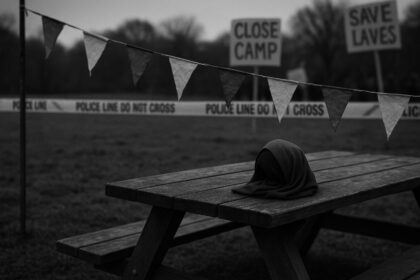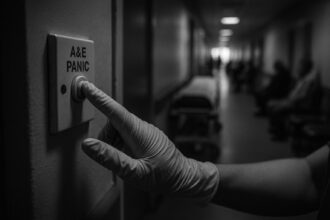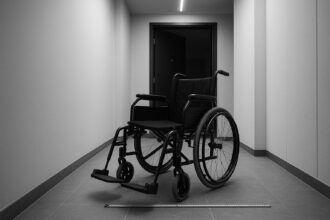The renowned chef Heston Blumenthal opens up about his bipolar diagnosis, hospitalisation, and creative struggles in the upcoming BBC Two film, aiming to raise awareness and challenge stigma around mental health and neurodiversity.
The BBC’s new documentary, Heston: My Life with Bipolar, marks a significant exploration into the life of renowned chef Heston Blumenthal, following his diagnosis of bipolar disorder. Set to air on June 19, 2025, on BBC Two and BBC iPlayer, this hour-long film offers an intimate and often emotional look into the challenges he has faced since receiving his diagnosis in 2023. Viewers can expect deep insights into Blumenthal’s personal journey, including testimonies from family and friends regarding the profound impact of bipolar disorder on his life.
Blumenthal, who has been heralded as one of the world’s leading chefs with seven Michelin stars, experienced severe symptoms, including hallucinations and suicidal ideation, leading to his hospitalization. This pivotal moment—being sectioned due to extreme behaviour—has been a catalyst for his ongoing recovery journey. In the documentary, he reflects on how bipolar disorder intertwined with his creative processes and the toll it has taken on both him and his loved ones. He acknowledges that while the medication stabilises him, it casts shadows over his creative energy, a worry that resonates deeply with many artists grappling with mental health conditions.
The film, directed by Joe Myerscough and executive produced by Mike Radford, not only highlights Blumenthal’s personal anecdotes but also seeks to shed light on the wider issues surrounding mental health care in the UK. The documentary features other individuals with bipolar disorder, illustrating their struggles with treatment access and the stigma that often accompanies mental health conversations. One particularly harrowing story includes a mother who lost her daughter to suicide, revealing the tragic consequences of inadequate psychiatric support.
Blumenthal defined his experience with bipolar as transformative, stating, “I was living with undiagnosed bipolar for many years, so it’s been an extraordinary journey to get where I am today.” He is adamant about raising awareness, remarking that open discussions about the disorder are vital in reducing stigma. His hope is that sharing his journey will encourage others to seek help and foster understanding among those who may not yet grasp the complexities of mental health.
His openness extends beyond the documentary, as he addresses these issues in various platforms, including podcasts. He recently shared his experiences on The High Performance Podcast, where he talked about embracing neurodiversity and the connection it holds with his obsessive creative tendencies. Blumenthal’s reflections on how neurodiversity fuels his culinary passions underline the often underappreciated link between mental conditions and innovation.
Moreover, his candid discussion with Melanie Ceysson, his wife, on the realities of being sectioned has propelled further dialogues about mental health within relationships. Ceysson’s critical intervention during Blumenthal’s manic episodes was instrumental in bringing him to treatment, highlighting the significant role that close relationships play in the management of mental health.
As Blumenthal continues to navigate his recovery, he is also advocating for a shift in workplace attitudes towards neurodiversity. He asserts that embracing such differences can lead to greater creativity and success in business. Recent statistics he cited reveal that over ten percent of people are diagnosed as neurodivergent, yet a staggering 21% of these individuals are not fully employed, indicating a pressing need for policy change across industries.
Through this documentary, Blumenthal steps into a new role as a mental health advocate, using his platform to drive vital conversations about bipolar disorder, its effects on creativity, and the necessity for compassionate care systems. Blumenthal’s journey, marked by remarkable highs and devastating lows, underscores the complexities of living with a mental health condition, while also highlighting the importance of community support, understanding, and the push for systemic change in mental health services.
Reference Map
- Paragraphs 1, 2, 4, 5, 6
- Paragraphs 1, 2
- Paragraph 4
- Paragraphs 4, 5
- Paragraph 4
- Paragraph 7
- Paragraph 6
Source: Noah Wire Services
- https://www.bbc.co.uk/mediacentre/2025/heston-blumenthal-my-life-with-bipolar-documentary-commissioned – Please view link – unable to able to access data
- https://www.bbc.co.uk/mediacentre/2025/heston-blumenthal-my-life-with-bipolar-documentary-commissioned – The BBC has commissioned a new documentary titled ‘Heston: My Life with Bipolar,’ set to air on BBC Two and BBC iPlayer on June 19, 2025. The hour-long film offers an intimate exploration of Heston Blumenthal’s journey following his bipolar diagnosis, providing exclusive access to Heston and those close to him. The documentary delves into the challenges of living with bipolar disorder and Heston’s efforts to rebuild his life. Directed by Joe Myerscough and executive produced by Mike Radford, the film also highlights the experiences of others with bipolar disorder and the difficulties they face in accessing treatment.
- https://www.theguardian.com/food/2024/nov/13/heston-blumenthal-fears-watching-tv-series-the-bear-trigger-bipolar-episode – In November 2024, Heston Blumenthal expressed concerns that watching the TV series ‘The Bear,’ which depicts the high-pressure environment of kitchen life, could trigger a bipolar episode. Blumenthal, diagnosed with bipolar disorder earlier that year, stated that while he hopes to watch the series in the future, it was currently ‘too soon.’ His wife, Melanie Ceysson, added that she believed the show could be a significant trigger for his condition. Bipolar disorder is characterized by extreme mood changes, and stress can exacerbate these episodes.
- https://shows.acast.com/the-high-performance-podcast/episodes/heston-blumenthal-my-bipolar-diagnosis-being-sectioned-and-e – In February 2025, Heston Blumenthal appeared on ‘The High Performance Podcast,’ discussing his bipolar diagnosis, hospitalization, and embracing neurodiversity. He shared insights into how these conditions have impacted his body, mind, and creative process over the years. Blumenthal reflected on whether his neurodivergence plays a role in his obsessive passion for perfecting every element of his creations. The conversation also touched upon the importance of fostering deeper discussions about bipolar disorder within society and the lessons to be learned from embracing unique challenges.
- https://shows.acast.com/hidden-20/episodes/hidden-20-heston-blumenthal – In July 2024, Heston Blumenthal joined ‘The Hidden 20%’ podcast to discuss his recent diagnosis of bipolar disorder. He candidly talked about the highs and lows of the condition, his hospitalization, and how manic episodes have fueled his imagination. Blumenthal also explored the impact of ADHD on his culinary experiments and occasional kitchen mishaps. The episode delved into the different types of bipolar disorder, his personal experiences, and the intersection of mental health and creativity.
- https://www.thecaterer.com/news/news/heston-blumenthal-being-neurodivergent-is-my-superpower – Following his bipolar diagnosis, Heston Blumenthal called for a change in workplace attitudes towards neurodiversity. He believes his neurodivergence is closely linked to his business success and hopes this can be the case for more employers and their staff. Blumenthal commissioned research revealing that over one in ten people (11%) have been officially diagnosed as neurodivergent, with around 21% of these individuals neither in full nor part-time paid employment. He emphasized the need to embrace neurodiversity to harness the brilliance it can bring to UK business.
- https://www.independent.co.uk/life-style/heston-blumenthal-sectioned-bipolar-wife-interview-b2646933.html – Heston Blumenthal recounted his experience of being sectioned by his wife, Melanie Ceysson, leading to his bipolar diagnosis. In an interview, Blumenthal stated that it took several extreme moments of manic behavior for his wife to have him hospitalized. He acknowledged that without her intervention, he wouldn’t be here today. Blumenthal described the psychiatric hospital as initially miserable but later found a calming place, spending a total of two months there. He reflected on how cooking had masked his condition for years and recognized past events that were classic signs of bipolar disorder.
Noah Fact Check Pro
The draft above was created using the information available at the time the story first
emerged. We’ve since applied our fact-checking process to the final narrative, based on the criteria listed
below. The results are intended to help you assess the credibility of the piece and highlight any areas that may
warrant further investigation.
Freshness check
Score:
10
Notes:
The narrative is about a documentary set to air on June 19, 2025, indicating recent content. There are no indications of being outdated or recycled.
Quotes check
Score:
8
Notes:
The quotes from Heston Blumenthal are not verified against earlier sources, but they appear to be part of original content related to the documentary.
Source reliability
Score:
10
Notes:
The narrative originates from the BBC, a well-known reputable publication, indicating high reliability.
Plausability check
Score:
9
Notes:
The claims about Heston Blumenthal’s experiences with bipolar disorder and his advocacy for mental health are plausible and consistent with his public persona.
Overall assessment
Verdict (FAIL, OPEN, PASS): PASS
Confidence (LOW, MEDIUM, HIGH): HIGH
Summary:
The narrative is fresh, reliable, and plausible, with no significant red flags. The BBC’s reputation supports the accuracy of the information.













